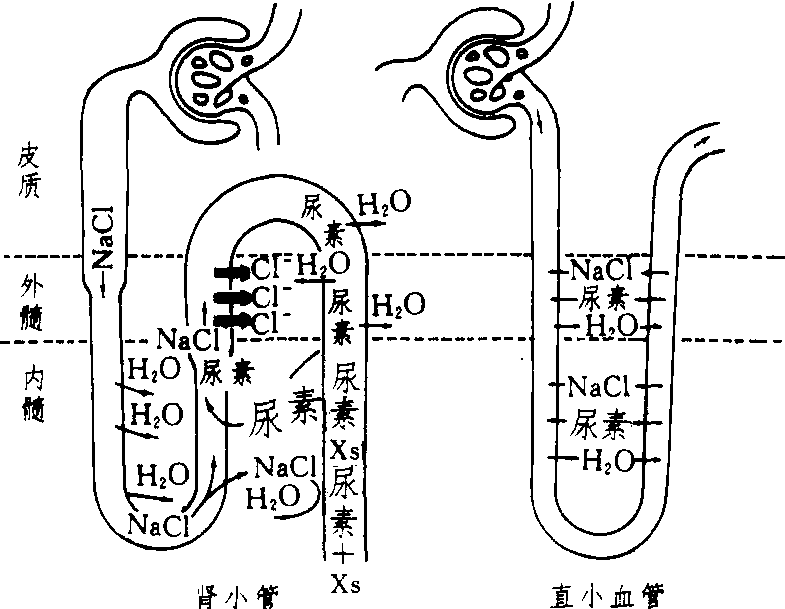逆流学说countercurrent theory
解释尿生成过程中浓缩和稀释机制的一种假说。鸟类和哺乳类是能排出浓缩尿的动物,在他们的肾组织中,髓袢和直小血管都呈“U”型,根据物理学原理推测和实验证明,尿的浓缩和稀释与此结构有关。尿液流入U形管的降支,并由管底经升支流出,方向相反。升支能将Cl-和Na+向管外转运出(Cl-主动、Na+被动),而水则不能向管外通透,造成升支管内渗透浓度降低,管周浓度增高。相反,转运到升支周围组织液中的NaCl可被动地进入降支,水则从降支中扩散入组织液,导致降支中的渗透浓度提高。升降支管壁的通透性不同,便形成髓袢纵向渗透浓度的梯度,即肾皮质部到肾髓质部组织的渗透压逐渐递增。当尿液通过集合管时,水分可通过管壁进入肾髓质间隙,使尿逐渐被浓缩。此外,抗利尿素(ADH)可增加集合管上皮细胞对水的通透性,水被重吸收多时,尿将浓缩成高渗尿;缺乏ADH时,则水被重吸收少,尿被稀释成低渗尿。直小血管的逆流交换作用又是维持髓质组织液的渗透浓度相对稳定的保证。

尿浓缩机制示意图
粗箭头表示升枝粗段王动转运出Cl-。粗线表示髓袢升枝粗段和远曲小管前段对水不通透。字体大小表示溶质浓度高低。Xs表示来被重吸收的溶质